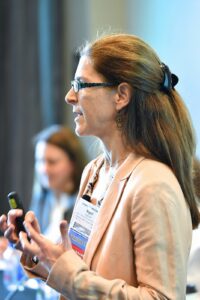
New, more comprehensive research confirms earlier findings that patients who access clinical notes of ambulatory care visits often spot errors in their electronic health records. And there are indications from additional research that people with lower health literacy may be benefiting from access to clinical notes about their care as well. Sigall Bell, M.D., the Director of Patient Safety and Discovery for OpenNotes, who led some of these studies, says, “These findings support greater efforts to engage all patients in health information access.”
Patient-Reported Errors
Counteracting Healthcare Disparities
Beginning with an exploratory effort involving primary care physicians at BIDMC, Geisinger and Harborview Medical Center in Seattle, the open notes movement has grown steadily over the past decade. More than 50 million patients in the U.S. currently have access to the notes written by clinicians after a visit, usually through secure, online patient portals.

Photo by bongkarn thanyakij from Pexels.
From the beginning, there has been concern that patient access to electronic health information would reinforce or widen socio-economic disparities in health care by primarily benefiting those with internet-enabled devices, broadband service and strong health literacy.





